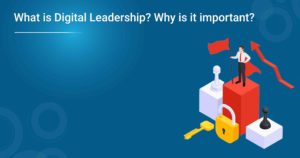Nowadays, the word “transformation” is frequently used, although it can signify different things to different people and organizations. Transformation now centers on creating new value in a world of unheard-of disruption and market instability. All transformations call for you to reconsider how your company currently and, in the future, provide value. What is a strategic transformation? And how can businesses accomplish them? Let’s understand this through this article.
What Is Strategic Transformation?
While different businesses and industries define strategic transformation differently, a few important elements remain constant.
To improve customer satisfaction and shareholder profits, a corporation may need to realign its business practices or pivot its products, services, or offerings. Businesses adapt their businesses strategically in response to intense and ongoing market pressure.
A genuine strategic transformation goes beyond discrete or superficial adjustments to a single product or operational plan. Instead, it entails taking all employees along while reinventing and reconfiguring how a firm runs. Transformations can range from purely operational to a complete pivot, like when Nokia switched from making tires to making mobile phones and generating software and communications goods.
Why Is Strategic Transformation Important in Today’s Workplace?
The last few years have seen the global marketplace face challenges that never existed. The COVID-19 pandemic’s long-lasting effects, economic shocks from Russia’s war in Ukraine, and widespread inflation have compelled enterprises to adopt a transformation strategy at a previously unthinkable pace.
The abrupt transition to hybrid and remote-first workplaces significantly accelerated strategic transformation efforts for many firms. Companies have been pushed to adapt their strategies due to the quick changes in employee and customer expectations.
The introduction of COVID-19 was the first of several shocks to the global supply chain that coincided with the shift to digital and exposed flaws in the predominate “just-in-time” strategy for manufacturing and distribution. Costs have increased; as a result, forcing businesses to find innovative ways to reduce expenses and streamline processes.
Drivers Of Strategic Transformation
A genuine strategic transformation goes beyond discrete or superficial adjustments to a single product or operational plan. Instead, it entails taking all employees along for the trip while reinventing and reconfiguring how a firm runs. There are several reasons why an organization can decide to go through a strategic transformation. It frequently occurs in response to change. Strategic transformation is a top priority for the following reasons:
- Technology change: Businesses constantly seek new opportunities to improve their operations as technology develops, whether switching to a cloud-based system or automating particular tasks.
- Efficiency: It may be necessary for an organization to identify more effective working methods if its goals and objectives still need to be accomplished. Process evaluation and duplication elimination, organizational structure or team changes, or a strategic transformation involving the incorporation of new technology may all be part of this.
- Cost reduction: A movement inside an organization to lower expenses, whether in specific areas or throughout the business, may be prompted by high expenditures or a need for cost savings.
- Lack of business growth: As was the case for General Motors, current operations may need to give a corporation the time or resources to concentrate on innovation and expanding its business.
- Merger or acquisition: It is complex when organizations with various philosophies and cultures join. Combining assets and operations, such as IT systems, financial operations, real estate, and sales and marketing, is necessary.
- New leadership: Whenever a new leadership team wants to execute a new strategy or aim for the company, they may seek to restructure the current organizational structure to suit their preferred methods of operation better.
- Low customer satisfaction: An organization may look for ways to change their business to meet consumers’ better wants if their current customers are unsatisfied, and their retention rates could be higher.
- Rising customer expectations: Meeting client expectations, such as responsiveness, speed, or customization, may necessitate corporate change.
- Political climate: A new law or rule that affects corporate operations or a shift in the political landscape, like Brexit, may necessitate strategic transformation.
Read More: What is the CXO Programme? Objectives & Features
What Kind Of Strategic Transformations Are There?
The strategic transformation could be required to adjust to change or remain competitive. Regardless of your position within your firm’s management team, you can improve your business adaptability and resilience awareness by comprehending various business changes. Let us have a look at some of the steps you should take to restructure the organization strategically:
- Cultural Transformation: Transforming an organization’s culture to reflect its vision and mission and coordinating its guiding principles with its strategic goals.
- Organizational Transformation: A business must alter its organizational structure and method of operation to achieve this. Employee support and buy-in are the key emphases of this dynamic process, which general management encourages.
- Management Transformation: Transformational management is the process by which an organization can experience a profound shift in its purpose, its operations, or other crucial areas. At times of transition, maintaining employee morale is a key responsibility of transformational leadership.
- Digital Transformation: A thorough overhaul of a company’s operations, capabilities, and business models to take advantage of the latest digital technologies and their swiftly growing social impact. To handle current and upcoming shifts, strategic and targeted measures are needed.
- Strategic Transformation: For the Firm to become more strategically minded, its core must be refocused.
- Information Systems Transformation: This strategic transformation is centered on changing an organization’s information systems. The word refers to all persons, procedures, and technologies involved in information management. Departments can now examine and share more data than ever because of the incorporation of new technology.
- Business Processes Transformation: Business process transformation is primarily motivated by adapting to new circumstances, requirements, and company goals. The company’s strategy must align with the modifications to its operational procedures.
After seeing the options available, it would be clear why several processes in every project seek to modify a firm. A business transition can result in significant interruptions and financial losses for a corporation without adequate preparation. We’ve highlighted the essential phases of implementing business transformation to assist you.
The Steps To A Strategic Transformation

Every business change is unique. A strategic transition is effective when all stakeholders know the changes that must be made are supportive and are motivated to implement them. Good buy-in and cooperation are the surest signs that a company is headed on the right path, even though most businesses seek reforms to boost profitability and stay competitive. But any change management strategy needs to follow some essential measures. The following should be part of a framework for strategic transformation:
1. Strategy
An organization that wants to change will have a vision for how its enhanced firm will appear. All stakeholders should be on the same page, and the vision should align with the strategic goals and business case.
Identifying the business’s target operating model, current state, and potential means of bridging the gap are the first steps in developing a strategy.
Create a diagram of the people, procedures, and systems supporting the supply of your product or service to clients to comprehend the current condition of your firm. Use this to help you define your future vision.
2. Establish leadership
It is crucial to appoint leaders to oversee and support the strategic transformation initiative.
A Programme Director is hired to assume ultimate responsibility for guaranteeing the change without difficulty, on schedule, and within budget. The program director will need the appropriate experience and skills to accomplish a successful change.
The senior leadership team must support the transition, and the CEO, CFO, or another board member should be the sponsor of that effort.
3. Planning and scoping
Your vision for the organization will be realized with a defined strategy that will guide the creation of a comprehensive strategic transformation plan.
The strategic transformation program’s subprojects are all listed in the implementation plan, specifying the changes that must be implemented and when. Each sub-project needs specific goals, benchmarks, parameters, timetables, and financial constraints. The breadth of the program must be managed and prioritized to show early success and build momentum for the change. Including every workstream, functional area, individual, system, and process impacted or involved in the strategic transformation is crucial.
Then there is the issue of external communication to consider. When and how will you inform consumers and suppliers of the changes? Careful planning must be done for all of this.
4. Set up program management
The Programme Director can establish program governance, oversee all parties involved in delivery, and modify and bend the strategic transformation roadmap to keep the program on track by establishing a Programme Management Office (PMO). The PMO keeps track of developments and frequently updates the sponsor of the strategic transformation and the board.
To manage the transition, leaders such as IT, HR, and Finance should be appointed in each workstream. They must be capable of motivating teams and enacting change if they are to do so, and they must align with the strategic transformation’s objectives.
5. Build resources
It would help if you had the right executive competency at each level of your company’s strategic transformation project to implement changes successfully. It is important to have the proper people, in the correct positions, at the appropriate times.
It is, however, often unrealistic to expect that your current executive team will be able to meet these objectives in a disruptive climate. Even the most seasoned corporate executives may only sometimes have the skills and expertise needed to manage every situation without assistance.
The ideal strategy is to build blended teams of internal and external expertise to manage each sub-project of the transformation and get you to the end vision or Target Operating Model.
6. Execution
Only when you take the initial step does the journey toward strategic transformation truly begin; it may take months or even years. Engagement in the workforce and flexibility and adaptability will be crucial as you face new obstacles.
The Programme Management Office (PMO) must periodically review and re-evaluate the implementation plan to ensure it is still relevant and modified as needed.
7. Integration
Once the change has been put into place, the strategic transformation program doesn’t come to an end. It can be difficult and time-consuming to embed and integrate new operating procedures or IT systems into an organization. For instance, if you switched to a new HR system, it would need to be integrated with other business systems like payroll, data analysis, and financial control systems. In this case, the new technology impacts the entire company; thus, your staff will need instruction on how to use it.
8. Get strategic transformation right
It takes a lot of work to carry out a corporate change successfully. With tips and guidance from the BIE’s strategic transformation specialists, a guide to handling strategic transformation difficulties is provided below.
Read More: What Are General Management Courses?
9. Know when to take action
The key is understanding the need for change and knowing when to act. When you realize you’re in trouble, you’re usually deeper into it than you realize because the symptoms frequently appear long after the illness has taken hold.
When this occurs, you must prioritize transformation. One of the most challenging aspects of change can be determining what has to be done and where you need to be because it calls for genuine creative commercial thinking, which can be a precious resource.
10. Transformational leadership
Having a leader willing to be accountable for putting change into practice is one thing. Still, it would help if you never undervalued the significance of having a leader aware of the attributes needed, which ones they already possess, and how to fill any gaps.
Most of a transformation’s technical components, like governance and stakeholder engagement, may be learned. Nevertheless, the weaknesses are in genuine leadership abilities that can inspire followers, win over hearts and minds, and empower people. A transformational leadership style is comprised of this.
11. An integrated approach to people, processes, and systems
A company transformation entails numerous components. Because of how intricate your business processes are, changing one part of the organization will inevitably affect other parts. For instance, your HR team may be impacted if you change the organizational structure of your Finance team. Technology advancements impact how financial data is produced, how it connects to HR, and how you develop reports. A properly integrated strategy that considers all components is necessary for success.
12. Focus on the bandwidth
The ability to carry out transformation while continuing business as usual (BAU) is essential. For general management to assist you in delivering change, you must give them the time and attention required. This is why hiring temporary executives, either as backfill or as specialized supplementary capacity, can be helpful.
13. Create a clear vision
It is essential to come to an understanding with all stakeholders regarding how your firm will evolve. Maintaining coherence and alignment across all components, including technology, organization, people, process, performance management, and interactions with clients, partners, suppliers, and regulators, is a challenge.
14. Understand internal capability for transformation
While most managers excel at day-to-day operations, it should not be surprising that designing transformations is not one of their common competencies. Even if your staff is competent, it’s doubtful that you will have all the talents you need for a transformation because transformation skills are not frequently on the hiring agenda.
15. Engage internal staff
Managing change in the workplace regarding its impact on people should be a significant priority when undergoing any corporate transformation. People facilitate change; thus, motivating staff to adopt new working practices will be essential to the success of any corporate transition.
What is the greatest way to persuade staff to embrace change when the results could take years? Our study revealed that most organizations prioritize open, frequent communication to retain workers, followed by cash compensation upon project completion.
16. Reassess and re-evaluate
How to maintain transformation coherence in a dynamic market context with shifting consumer expectations, an evolving, immature supply chain, or the development of new disruptive technologies is a problem that is frequently misunderstood.
Getting caught off guard is simple if you don’t continually examine and re-evaluate as you go through the business transformation. You must monitor whether your transformation strategy is relevant because things constantly change.
The Digital Business Transformation: Are You Prepared?
Real company transformation necessitates significant adjustments across the board. It’s a procedure and a cascading effect that promises ongoing development for your business.
Asking important questions like, “What is the present state of your organization’s transformation?” will help you establish yourself as a true thought leader in digital transformation. Do you move forward at full speed or encounter minor speed bumps? Can you assess and act swiftly if customer demand is declining?
A key factor in this situation is organizational buy-in. Driving organizational change will be challenging if the leadership and C-suite are skeptical of the potential benefits and new opportunities that business transformation might offer your corporation.
Our current understanding of transformation is in flux. The fundamental ideas and concepts always evolve and catch up with new technologies.
Edureka enables entrepreneurs to learn the art of implementing strategic objectives and creating organizational transformation by effectively communicating with employees. Is your business considering a new transformation strategy or amid a major shift? Let’s have a conversation.
More Information:
What is Environment Analysis? Objectives, Theories, and Examples
On Which Basis The Salary of General Manager Is Allocated



























